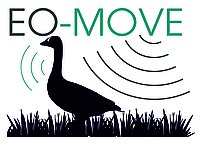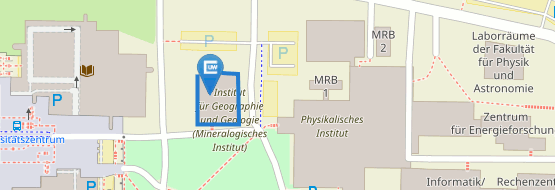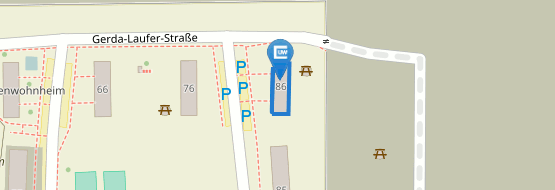EO-MOVE

- Subject: Animal movement and animal behavior
- Study site: Russia and Continental Europe
- Funding: Federal Ministry for Research and Energy
- Contact: Benjamin Leutner
Multiscale and multisensoral habitat analyses for the study of spatio-temporal movement patterns of animals
The EO-MOVE project is concerned with mapping, modeling and predicting local habitat use of migratory birds during the migration phase. Studies are developed on the example of the greater white-fronted goose (Anser albifrons). The project is based on two major components: first, collecting and analyzing GPS based movement data of several geese and second, characterization of small-scale habitat characteristics by means of remote sensing.This interdisciplinary research project is accomplished in close cooperation of the Department of Remote Sensing of the University of Würzburg and the Max-Planck Institute for Ornithology.
Migratory species have a special ecological role, in that they connect biodiversity and ecosystem function across distant regions of our planet. Understanding and monitoring as well as the operational prediction of movement patterns is of particular importance for the implementation of several international conventions and initiatives.
In agreements like the “Convention on Biological Diversity” (CBD), the “Convention on the Conservation of Migratory Species of Wild Animals” (CMS) and the subordinate “Agreement on the Conservation of African-Eurasian Migratory Waterbirds” (AEWA) the signatory states have pledged, among other commitments, to protect migratory species. Owing to their non-stationary, cross-border nature this is often particularly challenging. Generally speaking, these agreements have in common a mandate to research ecology and habitat requirements of migratory species as well as their migration routes. Moreover, the signatories have agreed to establish monitoring schemes of habitats and migratory routes and to conserve or restore these if threatened.
To this end, an improved understanding of causal animal-environment relationships is needed, as are timely and area-wide assessments of environmental state and trajectories.
Building on top of such information, spatially or temporally targeted conservation schemes could be implemented.
In a cost-effective, timely and consistent manner the necessary areal environmental information can only be obtained from recent remote sensing technologies.
In the EO-MOVE project we make use of synergies between optical and SAR data to characterize stopover sites of white-fronted geese during their migration from central Europe to northern Russia.
White-fronted geese react very sensitively to habitat changes and select their feeding and resting grounds on small spatial and temporal scales. For this reason remote sensing analyses so far have suffered from too coarse spatio-temporal resolutions, which did not match the ecologically required resolution. Within the EO-MOVE project we will therefore exploit the high revisit rates and spatial resolutions of the Sentinel-1 and Sentinel-2 satellite constellations. Both missions are planned with operational data availability in mind and would therefore also be prime candidates for the build-up of a large-scale monitoring or prediction system. For the first time, these systems allow to derive relevant variables for our white-fronted geese, like the onset of the vegetation period or land-use intensity in sufficient spatial and temporal resolution. Once such predictors are derived, they will be used to analyze their relevance for movement patterns obtained from GPS tracking data and eventually predict suitable areas based purely on remote sensing data.
The EO-MOVE project is funded by the German Federal Ministry for Economic Affairs and Energy.



